HARPER'S FERRY RECEIVING ITS DUE - "An Island In The Streams Of Time"
 I was first fascinated with Harper's Ferry
because former Calhounian Boyd Stutler collected John Brown stories,
photographs and documents about abolitionist John Brown. After his death,
Stutler's archives in dozens of file cabinets and cardboard boxes were sold
to the State of West Virginia for its historical collection. This included a
famous one-of-a-kind photograph of Brown.
I was first fascinated with Harper's Ferry
because former Calhounian Boyd Stutler collected John Brown stories,
photographs and documents about abolitionist John Brown. After his death,
Stutler's archives in dozens of file cabinets and cardboard boxes were sold
to the State of West Virginia for its historical collection. This included a
famous one-of-a-kind photograph of Brown.
Gone are the days when you could drive to the village at the confluence of the Potomac and Shenadoah Rivers and find a parking space and look around. My last weekend visit, possibly my tenth, required the parking of a car maybe four miles away to be bused to the site, now property of the National Park Service. The place was crowded with tourists, more so on weekends.
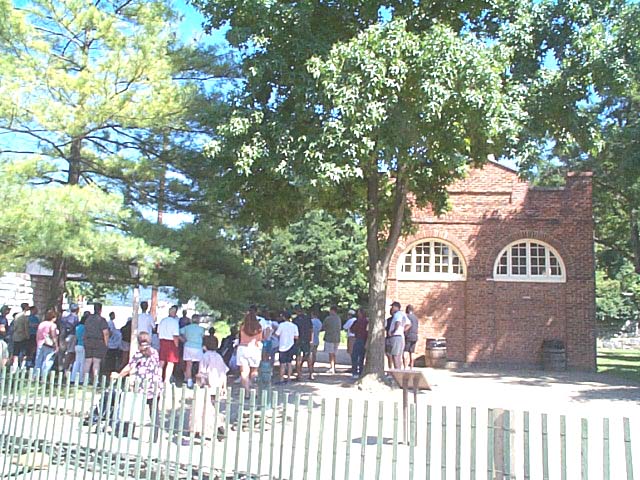
Site of Brown's Raid in 1859
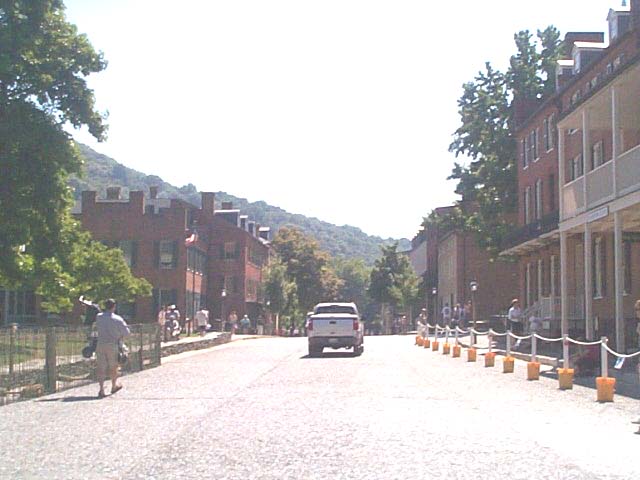
Main Street view of Harper's Ferry
The National Park designation has saved the historical town, with countless renovations and reinvention's of buildings, in addition to the delivery of the John Brown story to the public. It is well worth a visit.
My favorite site is the Hilltop Inn, 250 feet about the rivers, immortalized in a poem by Carl Sandburg celebrating the magnificence of the view: "Robert Harper's Ferry is an island in the stream of time; Hilltop House the bridge to its yesterdays." Across the river you can spot remnants of the old C & O Canal.
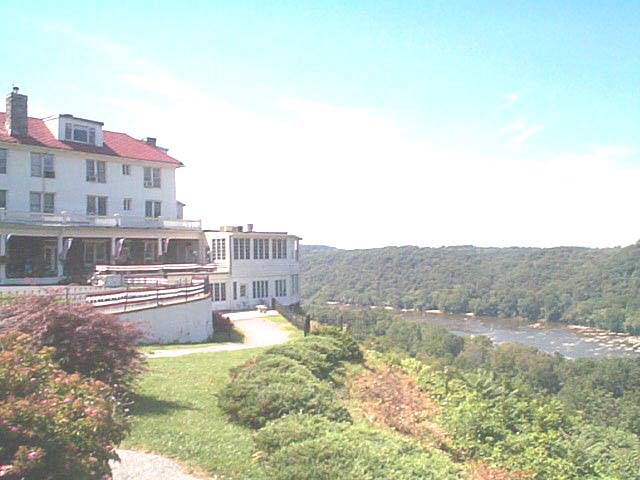
"Hilltop House, the bridge to its yesterdays."
Here stood Thomas Jefferson in 1783. "(The rivers) in a moment of their junction rush together against the mountain, rend it asunder and pass off to the sea....This scene is worth a voyage across the Atlantic." The contemplation of history, the importance of the place, can best be recalled from the benches at the Inn, although the walking tour is important.
The courage of John Brown against slavery, seizing 100,000 weapons from the Harper's Ferry arsenal with his liberation "army" of 21 men, is one of America's historic turning points. Brown was later tried for treason and hanged in 1859. The mighty forces of change quickly drove the nation into its only internal war, neighbor against neighbor. The Civil War was fought up and down the river ways, with blood running on the streets of the village as troops encamped in the buildings and on the steep hillsides. It is a wonder what happened with the town's 150 slaves.
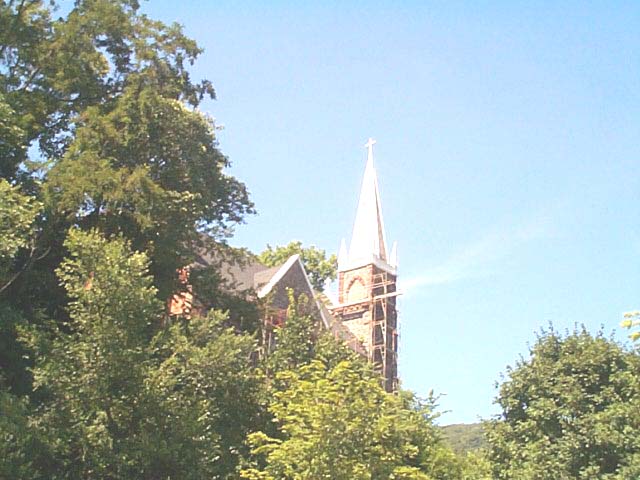
Solitude of old Catholic Church
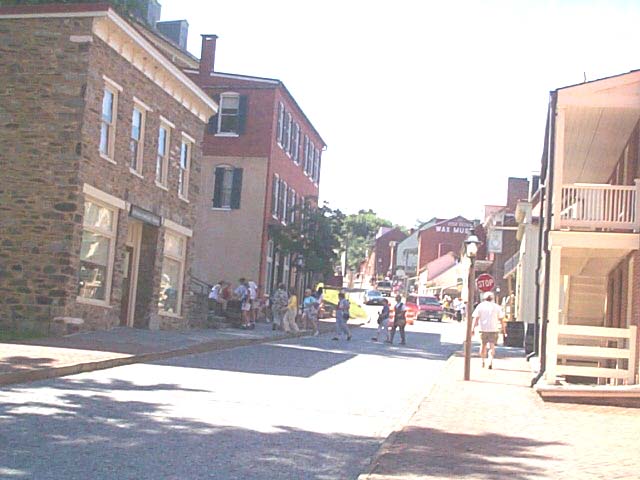
Tourists fill side streets
A peaceful solitude and respite has always been found in the village's old Catholic Church, reached by hundreds of steps up from the main street. Today, the church is being renovated and preserved, a place of spiritual solace for the crowd of tourists.
Here is the history of American transportation, from Robert Harper's Ferry to the C & O Canal of the 1830's, to the coming of the B & O and the Winchester and Potomac Railroads. The trains still roll along the hillside tracks, cranking, clacking and whistles blowing up and down the valley, a sound enjoyed just before sunset.
Here you can feel the presence of great men who made a difference, Washington, Jefferson, Lewis, Jackson and hundred's of others who came through this American passage. Harper's Ferry is finally receiving its due.
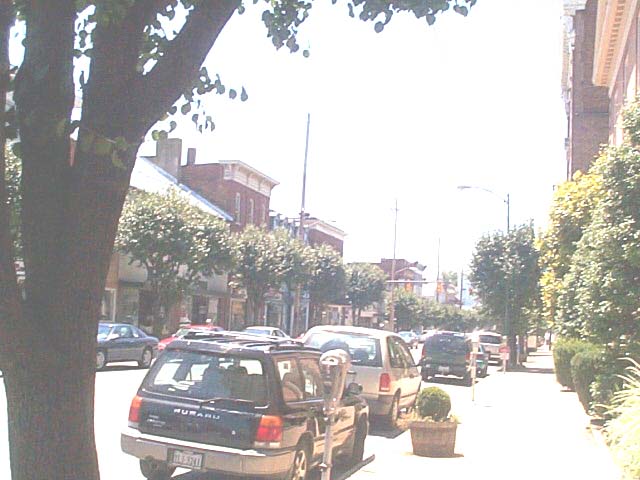 Nearby historic Charlestown
Nearby historic Charlestown